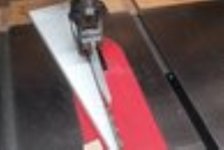PTI (with its own vested interest (of course), of which Festool is a member) suggests this:
Unintended Consequences Of The Sawstop Technology
1. Data supplied by SawStop concerning the number of table saw units sold and the number of reported blade contact incidences, demonstrates that operators are nearly five times more likely to contact the saw blade of a SawStop saw as opposed to the operator of a conventional table saw.
2. Logic dictates that this increase in accident rate on SawStop saws is due primarily to a user’s decision to use the blade guard less frequently or not at all due to a “sense of security” in having the SawStop flesh-sensing technology on the saw.
3. The reduced rate of using the blade guarding system will result in increased rate of facial or eye injuries caused by high velocity particles ejected by the saw blade or injuries caused by workpiece kickback.
4. The increased cost of even the least expensive table saws, as discussed in this document, may result in power tool users resorting to unsafe methods (for example: using portable hand held circular saw in inverted position) to accomplish cuts normally performed on a table saw.
5. The rising population in the 1980's of the affordable and safe benchtop saw resulted in a decrease in accidents from circular saws being used improperly. If benchtop saws become drastically more expensive or manufacturers withdraw from the market, there could be a return to improper use of circular saws and unintended declines in safety.
https://www.powertoolinstitute.com/pti-pages/it-table-saw-facts.asp


